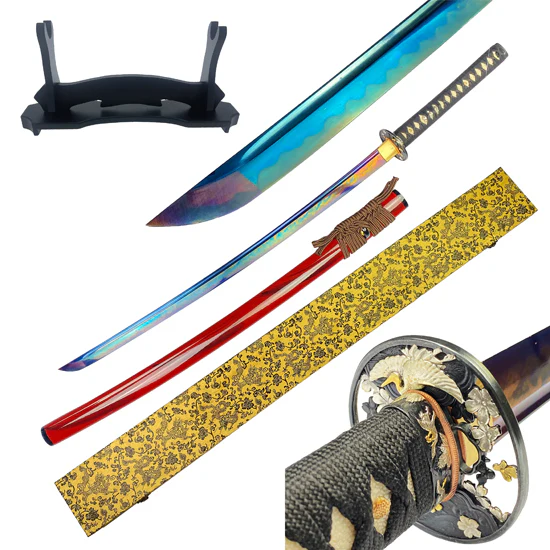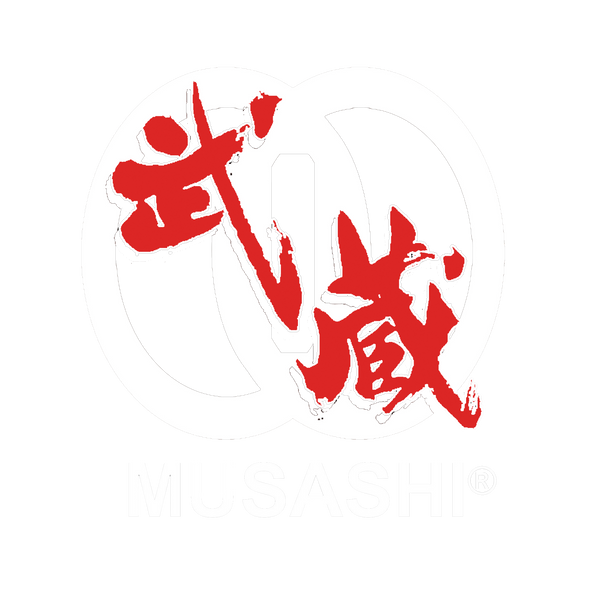
Understanding Samurai Sword Certifications and Documentation
Share
The NBTHK, created in 1948, checks and proves if Japanese samurai swords are real through four main levels: Hozon, Tokubetsu Hozon, Juyo Token, and Tokubetsu Juyo Token. Each level shows how valuable, well-made, and historically important the sword is. The official papers (Kanteisho) list key facts about who made the sword and special marks on the blade, while special numbers help track who legally owns each sword. Learning about these papers helps people understand how Japanese swords are proven real and what makes them valuable.
Key Takeaways
- NBTHK issues four certification ranks: Hozon, Tokubetsu Hozon, Juyo Token, and Tokubetsu Juyo Token, each reflecting different levels of importance.
- Authentication papers (Kanteisho) document crucial details about the sword, including maker, blade marks, and unique identification numbers.
- Certification significantly impacts sword value, with Tokubetsu Hozon and Juyo Token rankings increasing prices by 200-600%.
- Expert judges evaluate swords through rigorous testing of shape, patterns, and craftsmanship during formal review meetings.
- Complete documentation and original fittings enhance sword authenticity and market value among collectors.
The NBTHK Certification System: Rankings and Recognition
The NBTHK (Nihon Bijutsu Token Hozon Kyokai) began in 1948 and is Japan’s leading group for checking and proving real Japanese swords. They do this through careful testing called shinsa.
The NBTHK uses a step-by-step ranking system to show how important and well-made Samurai Swords are. There are four main ranks: Hozon (worth keeping), Tokubetsu Hozon (very worth keeping), Juyo Token (important work), and Tokubetsu Juyo Token (very important work).
Each rank comes with different papers - Hozon gets yellow paper, Tokubetsu Hozon gets brown paper, and Juyo Token comes with detailed papers including photos or sword tracings.
These certificates prove a sword is real, make it worth more money, and help protect Japanese culture.
Evaluating Sword Authentication Papers: Key Elements and Features
To check if a samurai sword is real, experts look at special papers that prove its value and history. The most important paper is called a Kanteisho, given by the NBTHK group. This paper lists key facts about the sword, like what kind it is, who made it, and special marks on the blade.
It also gives the sword a rank, such as Tokuho, to show how important it is. Each sword gets its own number, which links it to Japan’s official records and shows it’s legal to own.
Experts check many things before they give these papers. They study the maker’s name on the sword to make sure it’s real, and they look at how well the sword was made. Some older papers, like the KICHO TOKEN, use different colored paper to show how valuable the sword is.
These papers help keep track of real Japanese swords and protect their place in history.
Historical Evolution of Japanese Sword Documentation
The way Japanese swords are officially documented today started in the early 1900s, when experts began keeping careful records to save these old weapons.
It began with a group called NTHK in 1910, and then NBTHK formed in 1948, bringing in new ways to check and prove each sword’s authenticity.
Over time, the rating system grew from basic certificates to today’s four main levels: Hozon, Tokubetsu Hozon, Juyo Token, and Tokubetsu Juyo Token, each showing better quality and importance.
- Record-keeping systems grew stronger to tell real Japanese swords from fake ones.
- Standards for checking swords became stricter to protect Japan’s history.
- Today’s certificates mix historical study, scientific testing, and expert knowledge.
Certification Criteria and Assessment Process
Swords in Japan must pass careful testing by skilled judges at special review meetings. The testing looks at many parts of the sword to check if it’s real and how much it’s worth based on its history and how it was made.
|
Certification Level |
Key Requirements |
|
Hozon |
Real signatures, good looks |
|
Tokubetsu Hozon |
Top-quality work, historical value |
|
Initial Application |
Only for Hozon/Tokubetsu Hozon |
|
Advanced Ranks |
Must have earlier certification |
Judges check the sword’s overall shape, wave patterns on the blade, and the handle area. They make sure the maker was real and that the sword follows old-style methods. Small flaws might still allow a sword to get Hozon approval, but big damage means the sword won’t pass. This helps keep the testing system trustworthy.
Understanding Certificate Types and Their Significance
Japanese swords become more valuable when they receive official papers from respected groups like the NBTHK and NTHK in Japan.
These papers, called origami, prove the sword is real and explain its history by listing key details about how it was made and who owned it.
The certification system works like steps on a ladder, with each level meaning more:
- Hozon and Tokubetsu Hozon papers show the sword is good enough to keep and protect
- JuYo Token means the sword is very important and well-made
- Tokubetsu JuYo Token is the highest honor, given only to the best swords
These papers help set the sword’s price - the higher the certification level, the more valuable the sword becomes.
Each paper describes the sword’s size, who made it, and its place in history, helping prove it’s genuine.
Value Impact and Market Considerations of Certified Swords
Verified samurai swords sell for much more than those without papers. Official checks by groups like the NBTHK and NTHK greatly affect a sword’s price. Old Japanese swords that come with Hozon papers and clear records of past owners bring top money from collectors, showing how much people value real historical pieces.
|
Certification Level |
Market Impact |
Value Enhancement |
|
Tokubetsu Hozon |
High Demand |
200-300% Increase |
|
Juyo Token |
Premium Status |
400-600% Increase |
|
Basic Hozon |
Entry Level |
100-150% Increase |
Getting a sword checked takes time, but makes it worth much more as something to buy and keep. Buyers most want swords that have all their papers, original fittings, and storage cases, as these make the sword more real and worth more money.
Frequently Asked Questions
What Is a Hozon Certificate?
A Hozon certificate is an official paper from the NBTHK that proves a Japanese sword is real and worth keeping. Experts check the sword carefully and confirm its value to history and collectors. Having this certificate makes the sword more valuable and appealing to buyers.
Who Can Authenticate a Samurai Sword?
Trusted groups like NBTHK and NTHK, as well as trained sword experts, can check if a samurai sword is real. They look closely at the sword’s history, maker’s mark, how it was made, and how well it has been kept over time.
What Is the Holy Grail of Samurai Swords?
The finest samurai swords are the special-grade katanas, mainly those made by the famous masters Masamune and Muramasa. These swords stand out for their perfect crafting, complete original fittings, and proven battle history.
What Is the Difference Between NTHK and Nbthk?
The NBTHK uses strict testing methods to check and certify swords by looking closely at their blade features, while the NTHK takes a broader approach by studying the sword’s history, helping keep swords in good condition, and teaching people about their cultural value through group-based checking and learning programs.
Conclusion
Understanding Japanese sword certification requires knowledge of various authentication systems, especially the NBTHK’s evaluation process. Documentation and certificates show authenticity, history, and market value. For collectors and experts looking to evaluate and preserve these cultural treasures, knowing different certification levels is essential. Whether you’re interested in authentic Samurai Swords or modern replicas, visit Musashi Swords to explore our extensive collection of certified blades.
